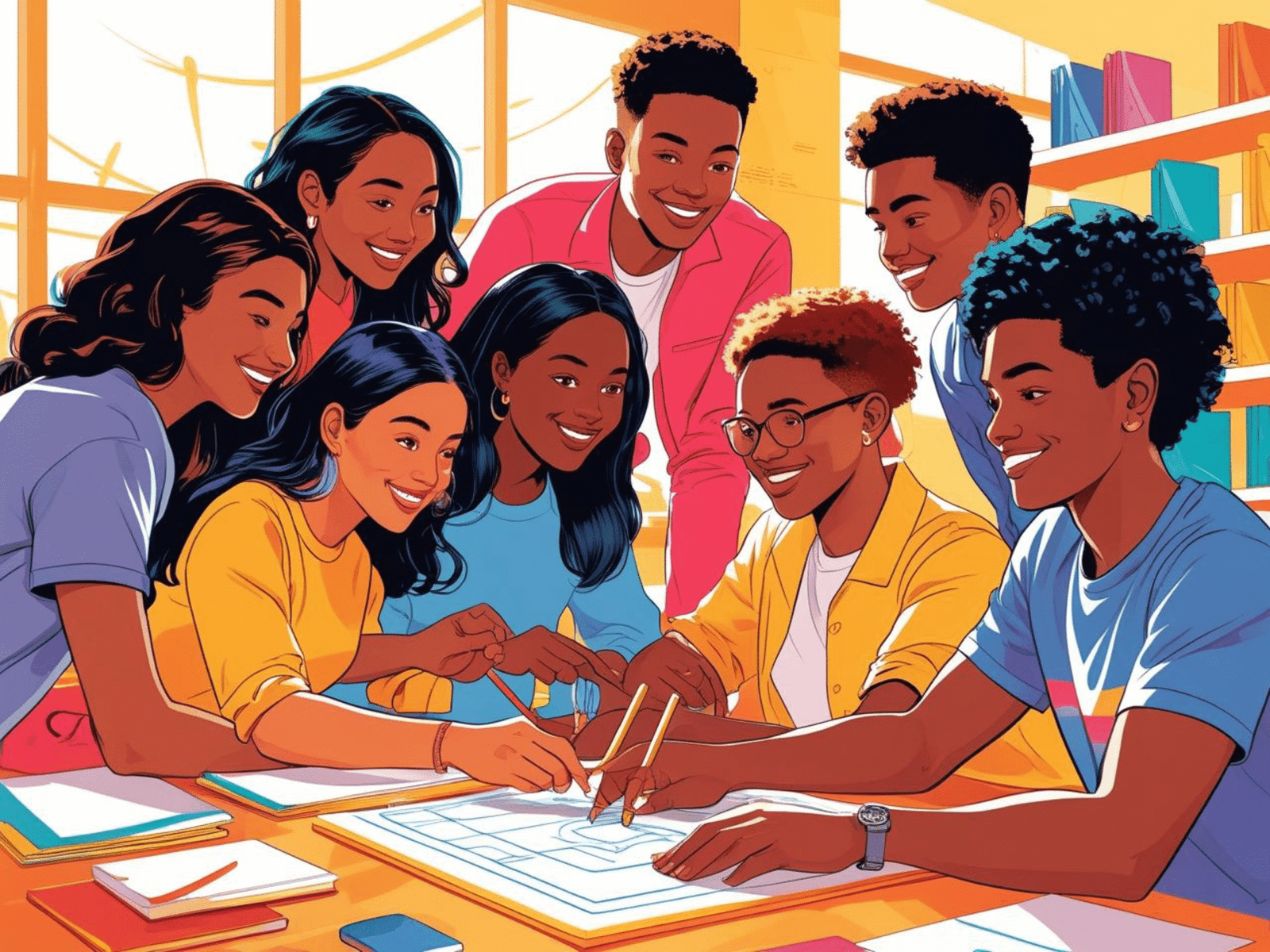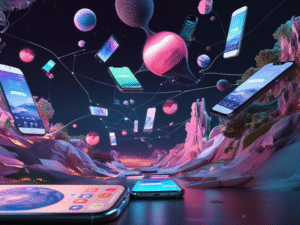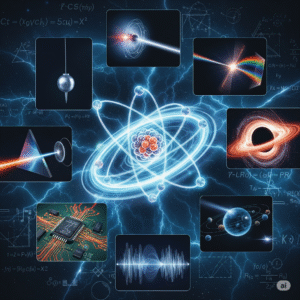Table of Contents
ToggleAugmented Reality and Virtual Reality in Education
In recent years, technology has transformed almost every aspect of human life, and education is no exception. Among the most revolutionary tools making their way into classrooms are Augmented Reality (AR) and Virtual Reality (VR). These immersive technologies are redefining the way students learn, teachers instruct, and institutions deliver knowledge.
What are AR and VR?
Augmented Reality (AR) overlays digital elements—such as images, videos, or 3D objects—on the real world using devices like smartphones, tablets, or AR glasses. For example, a biology student can point a phone at a textbook image of the heart and see it beating in 3D.
Virtual Reality (VR), on the other hand, immerses learners in a completely simulated environment. Using VR headsets, students can explore ancient civilizations, conduct scientific experiments, or even walk through the human nervous system.
Benefits of AR and VR in Education
1. Enhanced Engagement and Motivation
Traditional teaching methods can sometimes struggle to capture students’ attention. AR and VR make lessons more interactive, keeping learners actively involved. For example, instead of reading about space exploration, students can “travel” to Mars in a VR simulation.
2. Improved Understanding of Complex Concepts
Subjects like physics, chemistry, or medicine often involve abstract ideas that are difficult to visualize. With AR and VR, learners can interact with 3D models, conduct virtual experiments, and gain deeper conceptual clarity.
3. Safe and Risk-Free Learning Environment
Some subjects, such as medical surgery, engineering, or aviation, require hands-on practice that can be risky or expensive in real life. VR allows learners to train in a safe, controlled environment without fear of making costly mistakes.
4. Bridging the Gap in Distance Learning
In the era of online education, AR and VR help recreate classroom experiences for remote learners. Students can participate in virtual labs, attend immersive history lessons, or collaborate with peers in a simulated classroom.
5. Inclusive Education
These technologies can also support students with disabilities. For example, VR can create custom learning environments, and AR can provide real-time translations or visual aids to support learning challenges.
Real-World Applications
Medical Education: Medical students use VR to practice surgeries before entering an operating room.
History and Geography: Learners can “walk through” ancient cities or explore continents in 3D.
STEM Subjects: AR apps allow students to build molecules, test physics experiments, or learn coding interactively.
Language Learning: Immersive VR environments help learners practice communication in real-life scenarios.
Challenges to Overcome
While AR and VR hold immense potential, there are hurdles to adoption:
High Costs of VR headsets and AR-enabled devices.
Technical Barriers, such as lack of infrastructure in underdeveloped regions.
Teacher Training, since educators need guidance on how to integrate these tools effectively.
The Future of AR and VR in Education
As technology becomes more affordable and accessible, AR and VR are likely to become standard tools in classrooms worldwide. Their ability to make learning experiential, personalized, and interactive ensures that they will play a critical role in shaping the future of education.
Conclusion
Augmented Reality and Virtual Reality are more than just futuristic concepts—they are transforming education today. By creating immersive, engaging, and safe learning environments, AR and VR have the power to unlock new possibilities for students and educators alike. As we move forward, these technologies will not just supplement traditional learning but will redefine how knowledge is experienced and shared.
Education: The Need of Human Development
Education is one of the most powerful tools for personal growth and societal progress. It not only imparts knowledge but also shapes character, builds confidence, and provides the skills necessary to face the challenges of life. From ancient times to the modern digital age, education has been the cornerstone of human civilization, helping societies evolve and prosper.
Importance of Education
Education goes beyond textbooks and classrooms. It is a lifelong process that begins at home, continues in schools and universities, and extends into professional and personal experiences. The importance of education can be seen in several aspects:
Personal Development – Education nurtures critical thinking, creativity, and decision-making skills. It helps individuals develop their personality and understand their responsibilities.
Social Progress – An educated society is more likely to embrace equality, justice, and tolerance. Education reduces social evils like discrimination, poverty, and crime.
Economic Growth – Education creates skilled professionals, entrepreneurs, and innovators who contribute to national development and global competitiveness.
Empowerment – Education empowers people, especially women and marginalized communities, to stand up for their rights and live with dignity.
Traditional vs. Modern Education
Traditional education systems were focused on rote learning and discipline. However, with the advancement of technology, modern education emphasizes creativity, practical knowledge, and critical thinking. Digital classrooms, online courses, and e-learning platforms have made education more accessible and flexible than ever before.
Challenges in Education
Despite progress, education faces several challenges:
Lack of resources in rural areas
High dropout rates due to poverty
Inequality in access to quality education
Overemphasis on examinations rather than skills
Addressing these issues requires joint efforts from governments, educators, parents, and communities.
The Future of Education
The future of education lies in blending traditional learning with modern technology. Personalized learning, artificial intelligence in classrooms, and skill-based training will play a vital role. The focus will shift from memorizing facts to problem-solving, creativity, and emotional intelligence.
Conclusion
Education is not merely about acquiring degrees; it is about learning how to live, think, and contribute positively to society. A strong education system ensures that future generations are prepared not only for careers but also for life’s challenges.
Augmented Reality: Bridging the Gap Between the Real and Digital World
In today’s fast-paced digital era, technology is continuously transforming how we see and interact with the world. One of the most exciting innovations shaping this change is Augmented Reality (AR). Unlike Virtual Reality (VR), which immerses users in a completely digital environment, AR overlays digital elements onto the real world, enhancing perception and interaction with the physical environment.
What is Augmented Reality?
Augmented Reality is a technology that blends real-world objects with computer-generated images, sounds, and information. Through smartphones, tablets, AR glasses, and even headsets, AR enriches our surroundings by adding interactive layers of data and graphics in real time.
For example, AR applications can allow you to see how furniture looks in your living room before purchasing it, or guide you through city streets with digital arrows layered over your actual surroundings.
How Augmented Reality Works
AR functions using a combination of sensors, cameras, GPS, and advanced software. Devices capture the real-world environment and then superimpose digital content onto it. The three core technologies that make AR possible are:
Computer Vision : Helps devices recognize objects and environments.
Motion Tracking : Tracks user movement and device orientation.
Depth Sensing : Measures the distance between the device and surrounding objects.
Applications of Augmented Reality
The potential of AR spans across industries and everyday life. Some major applications include:
Gaming and Entertainment
Games like Pokémon Go introduced AR to the mainstream, blending the virtual with the real environment. Similarly, AR is being used in interactive storytelling and immersive concerts.
Education and Training
AR makes learning interactive and engaging. Medical students can study 3D anatomy models, while engineers can practice repairing complex machinery using AR simulations.
Retail and E-Commerce
Brands like IKEA and Lenskart use AR to let customers try furniture or eyewear virtually before purchasing, enhancing shopping experiences.
Navigation and Tourism
AR-enabled apps can display directions, historical facts, and 3D reconstructions when exploring cities or heritage sites.
Advantages of Augmented Reality
Enhances real-world experiences.
Improves learning and training efficiency.
Boosts customer engagement in business.
Bridges gaps between imagination and reality.
Challenges of Augmented Reality
Despite its potential, AR faces several challenges:
High development costs.
Privacy concerns due to real-time data collection.
Dependence on high-speed internet and advanced devices.
Limited awareness and adoption in some regions.
The Future of Augmented Reality
The future of AR looks incredibly promising. With the rise of 5G, powerful processors, and wearable AR devices like smart glasses, AR is expected to become part of our daily lives. From remote work collaboration to smart city infrastructure, AR will redefine how we connect with both people and environments.
Conclusion
Augmented Reality is more than just a technological trend—it’s a bridge between the real and digital world. By enhancing our physical surroundings with interactive digital elements, AR is transforming industries, revolutionizing education, and reshaping entertainment. As advancements continue, AR will play a vital role in how we learn, shop, communicate, and experience the world.
Virtual Reality: Transforming the Way We Experience the World
Introduction
In today’s digital age, Virtual Reality (VR) has emerged as one of the most fascinating and revolutionary technologies. It creates a computer-generated environment that allows users to interact with digital objects and spaces as if they were real. Unlike traditional screens or 2D platforms, VR immerses users into a three-dimensional, interactive world through headsets, motion controllers, and sensory devices. From entertainment to education, VR is reshaping industries and redefining human experiences.
How Virtual Reality Works
VR technology relies on a combination of hardware and software:
VR Headsets such as Oculus, HTC Vive, and PlayStation VR provide the immersive visual experience.
Motion Controllers and Sensors track movements, allowing users to interact with virtual objects.
Haptic Feedback Devices simulate the sense of touch, making the experience more realistic.
Software and Applications generate realistic 3D environments using computer graphics and AI.
Together, these components create a lifelike experience where users feel as though they are physically present in a different world.
Applications of Virtual Reality
Gaming and Entertainment
VR has revolutionized gaming by providing fully immersive experiences. Players can explore virtual worlds, engage in adventures, and interact with characters in ways that traditional gaming cannot offer. VR movies and concerts are also gaining popularity.
Education and Training
VR is being used in classrooms and training centers to create interactive learning experiences. Medical students can perform virtual surgeries, engineers can test prototypes, and soldiers can practice military operations in a safe, controlled environment.
Business and Collaboration
VR allows companies to conduct virtual meetings, product demonstrations, and remote team collaborations. Architects and designers can create 3D models for clients to explore before construction begins.
Tourism and Real Estate
With VR, people can take virtual tours of famous landmarks, hotels, or properties without leaving their homes. This helps travelers and buyers make better decisions.
Advantages of Virtual Reality
Provides immersive and engaging experiences.
Enhances learning and training without real-world risks.
Breaks geographical barriers for collaboration and communication.
Offers new opportunities for creativity and innovation.
Challenges and Limitations
Despite its potential, VR faces certain challenges:
High cost of VR equipment.
Motion sickness and discomfort for some users.
Requirement of strong hardware and high-speed internet.
Limited content compared to traditional media.
Future of Virtual Reality
The future of VR is promising. With advancements in artificial intelligence, 5G connectivity, and lightweight wearable devices, VR will become more accessible and realistic. It is expected to play a key role in the metaverse, a shared digital universe where people can work, play, and socialize virtually.
Conclusion
Virtual Reality is more than just a technological innovation; it is a gateway to new dimensions of human experience. From transforming entertainment to revolutionizing education and healthcare, VR is paving the way for a future where the line between the real and virtual worlds continues to blur. As technology advances, Virtual Reality will become an integral part of our everyday lives, opening limitless possibilities.



